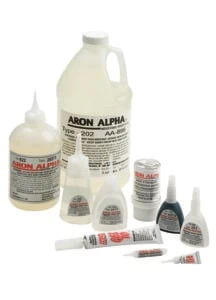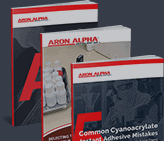The Case for Industrial Fixturing Using Adhesives vs. Mechanical Systems
Introduction
It’s not new news that almost everything manufactured by industry has component pieces that need to be fixtured together before they are integrated into the main product being produced. These fixturing applications run the gamut including automotive, aerospace, metal working, electronics and many more. These include tier 1, tier 2 and tier 3 manufacturers.
Today, these entities have basically two options when it comes to solving their fixturing requirements; 1) Mechanical fixture using screws, welds, rivets, etc. and 2) Adhesive bonding using specialized polymer adhesives. Over the years, engineers have gravitated toward adhesives because they have proven to be less costly and are more durable as it relates to performance. In addition, adhesives provide design engineers with more flexibility when it comes to approaching the design. This post will provide the engineering community with a brief overview of adhesives vs. mechanical fastening.
Mechanical Fastening
With mechanical fastening, some of the advantages include the ability to disassemble parts without damage and therefore not ruining the intended asset. In addition, aside from allowing for quick disassembly, bond points do not need to be formed to achieve the fixturing objective.
Some disadvantages of mechanical fixturing is this process can result in gaps between the points of fastening, around fasteners and between points of attachment. In addition, fixturing allows for moisture, water or fluid intrusion into the part which can cause accelerated corrosion ultimately leading to damage to the product. Mechanical fixturing can also add weight if the process is using spot welds and can also loosen when in-service if vibration is introduced. Vibration can also cause stress concentrated at the point of joining which can lead to hole distortion and loss of effectiveness.
Instant Industrial Adhesives (Cyanoacrylate super glues)
Instant industrial adhesives, in particular, Cyanoacrylate adhesives, offer many advantages including faster application and fixture times which require less space to hold (clamp) product while waiting for adhesives to cure. In addition, one-component instant adhesives reduce cost by reducing the scrap inherent with two-component adhesives including cured mixing nozzles and off-ratio adhesive streams. These added costs can be eliminated with one-component cyanoacrylates. Automotive Tier 1 and 2 part OEMs have used cyanoacrylate technology for decades. Many light weight materials such as engineering plastics (PP, PE, ABS, PVC, Nylon), foam and dense elastomers (EPDM, Nitrile Rubber, Chloroprene Rubber, etc) are being considered to produce more fuel efficient cars. These materials are no longer assembled with traditional, heavy fasteners therefore the expansion of light weight cyanoacrylate applications.
And finally, because these adhesives offer enhanced temperature and humidity resistance, they eliminate the costs associated with slower fixture speeds and weaker bond lines found in high heat/humidity applications. Finally, high temperature resistance and added strength allow cyanoacrylates to be used on a broad spectrum of finished products including maintenance-repair-overhaul (MRO), cosmetic cases (lip stick tube risers and blush-on kits), athletic footwear rework, temporary bonding situations, screen print screen to frame, dental laboratory modeling, morticians, police finger print kits, toys, small appliances, disposable medical devices (catheters, balloon transducers, urine bag port outlets), electric and acoustic guitars, prosthetic appliances).
Conversely, areas where instant industrial adhesives may not be a good fit include applications that require excellent shock or impact resistance as well as excellent gap filling abilities. The nature of the application will depend on the suitability for Cyanoacrylate’s to be specified. Contact Aron Alpha directly to see if your next application is a fit (phone number).
We hope this post has been helpful and has provided a good overview of the advantages and disadvantages of each fixturing process.
{{cta(‘e67411e5-e440-4a6b-88de-5760fe311292’)}}





